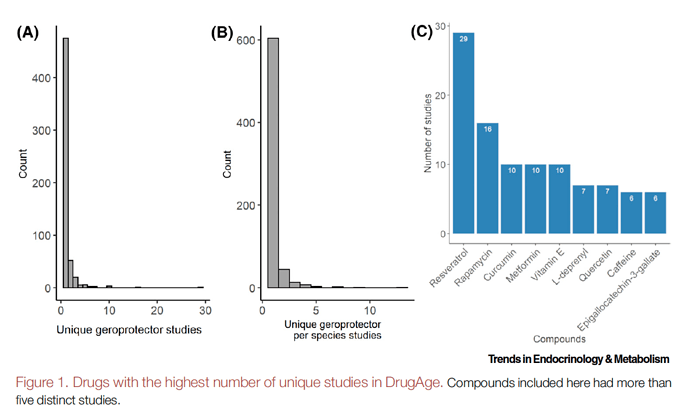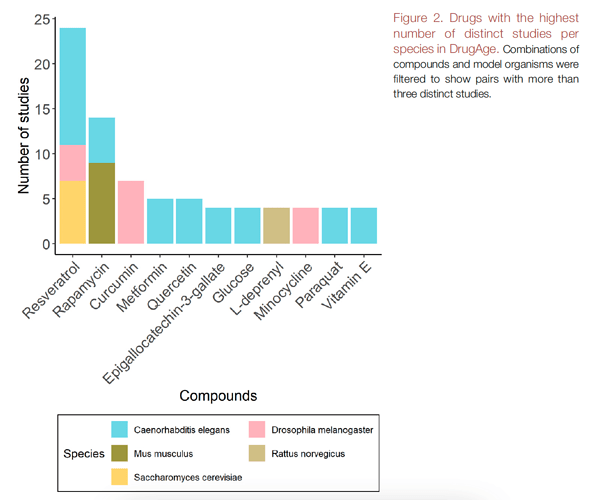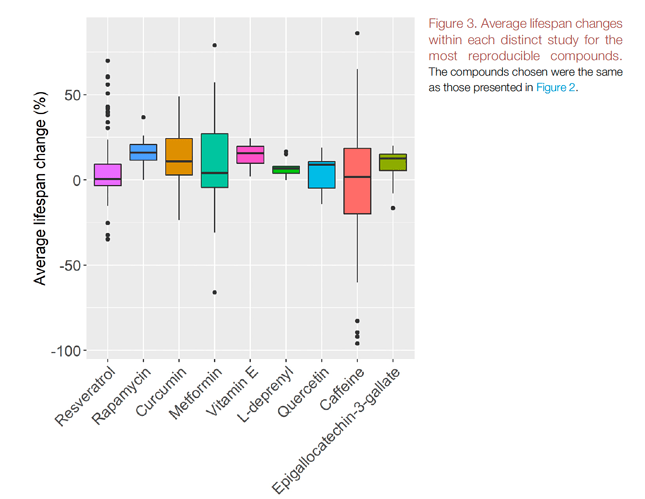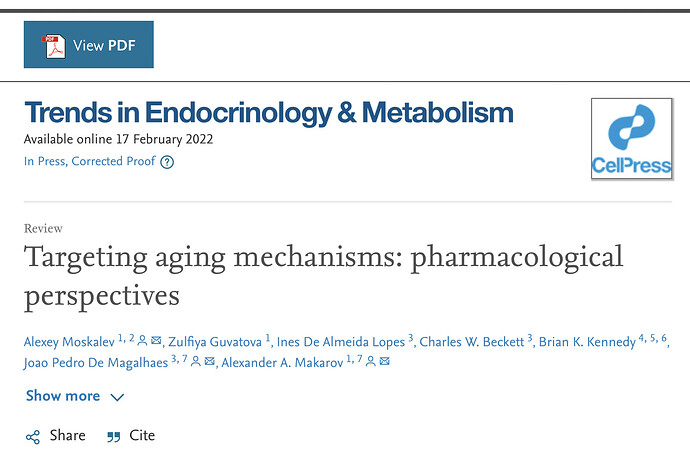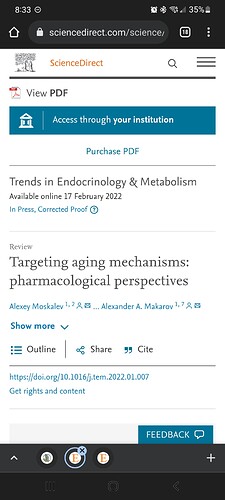A new paper that covers the state of the research on different possible anti-aging drugs and supplements (or as they call them “geroprotectors”).
Rapamycin comes out on top with biggest lifespan increase, reproduced by many labs with the most number of studies (done in mice, not just flies and c.elegans/worms).
Given the large number of lifespan studies in mammals with rapamycin, even if a fantastic new compound were discovered today, it would take a decade or more to become anywhere nearly as well-proven as rapamycin in terms of its anti-aging effect. Rapamycin will be the king of anti-aging drugs for a long time, it seems.
The paper notes:
Rapamycin and vitamin E have given more consistent results and produced similar effects upon lifespan in multiple studies. Given this, there is a strong case to be made for the inclusion of rapamycin and vitamin E as potential geroprotectors.
…quercetin and rapamycin appear to have the most consistent effects on lifespan at similar dosages, making them solid candidates for geroprotectors.
Resveratrol has more studies total, but many are in worms (c.elegans) and it had a poor average result in terms of lifespan increase (i.e. none) and Vitamin E has good effects in worms also - but I don’t think anyone expects Vitamin E to be great in human longevity (please, if someone has different information on Vitamin E and lifespan increase, please post it below).
Followup by Matt Kaeberlein on Vitamin E:
Some Other Points I Found Interesting:
Hormetins
The effect of most geroprotectors is relatively small because of the limited reserve of cellular repair mechanisms. For the same reason, it is not useful to combine hormetins. Examples of mitohormetins have been discussed previously. Lithium promotes longevity through GSK-3/NRF2-dependent hormesis [94]. Two other major geroprotectors, spermidine [95] and berberine [96], are also toxic at relatively high doses in mammals. Indeed, several, if not all, natural compounds such as polyphenols, isothiocyanates, terpenoids, and polyamines mediate a hormetic response in small doses by activating stress response factors such as FOXO3a, heat-shock transcription factor 1 (HSF-1), AMPK, or NRF-2. One such compound is the broccoli-derived sulforaphane, which activates the NRF2 pathway, and was able to extend the lifespan of C. elegans by 18.2%
Prebiotics, metabiotics, and enterosorbents
There is a decrease in intestinal microbiota diversity with age and an increase in the proportion of
proinflammatory pathobionts [116]. Some colon bacteria produce substances with potential geroprotective properties, for example, Urolithin-A, spermidine, vitamin K2, and short-chain fatty acids (SCFAs). Vitamin K2 contributes to the retention of calcium in the bones and reduces the risk of both osteoporosis and cardiovascular disease and is thus a strong candidate geroprotector [117]. The SCFAs propionate and butyrate are produced by Clostridia and Bacteroides by fermenting plant fibers in the large intestine. They serve as energy metabolites for intestinal epithelial and brain cells. Both butyrate and dietary fiber can be considered as potential geroprotectors because they improve neuroinflammation associated with aging [118] and decrease the risk of colon cancer [119]. Similar effects have been observed for other prebiotics. Specifically, a 10% oligofructose-enriched inulin prebiotic changed the intestinal microbiota profile in mice, which led to the reversion of stress-induced immune priming and neuroinflammation [120].
Matt Kaeberlein had this to say on Twitter about this paper:
Read the full paper here:
NOTE: We just discovered that the link above is a paywall link to the paper. But - You can download the full research paper from the link the professor included in his tweet announcing the new paper (go to the page from the link below in the tweet and click on the link “view PDF”):
